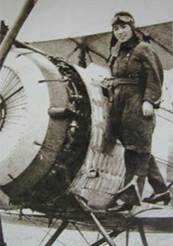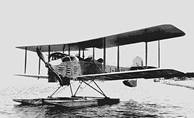@
@
|
5 The wings of a woman pilot |
|
¼ú±«iã¢j |
@
| uÓé³ÆÌìÍìÍíµ |
 |
| @@Óé³ÆÌRͱæÈüµ¢ | |
| @@@@@@@ü´I@ü´Ó!! | |
| @@@@@@@ñòsm@¼{«qv@ |
| These were the words spoken by Kiku Nishizaki when she made a flight to her hometown in 1933. She was the first Japanese woman pilot to fly overseas. Now letfs see how she became a woman pilot. |
@
| Kiku was born in Kamisato in 1912. She was a very active girl. When she was only four, she went up to the roof of her house by herself. Her parents were surprised at her behavior and worried about her a lot. But she looked very happy and had fun on the roof. Now you can understand how active she was. Also, she was a very honest girl. When she had an interview test at a teachersf college, she answered very honestly as follows: |
| Interviewer: | Why do you want to enter our college? |
| Kiku : | Because I missed entering a girlsf high school. |
| Interviewer: | Why did you choose the two- year course? |
| Kiku : | I have many brothers and sisters so I donft want my parents to pay a lot of money. |
| It was very difficult for women to enter college in those days, but she passed the exam. |
@
| After she graduated from the teachersf college, she
became a teacher at an elementary school.
She was sixteen years old. She
often played basketball with boys and enjoyed cycling with students.
One fine day in fall, she went cycling with some
students. They stopped by at
Ojima(ö) Airport and watched a plane.
She touched a plane for the first time.
From this moment, she became interested in flying.
She studied about flying all by herself.
When she had a question, she sent a letter to the pilots that she
met at |
@
| In 1931, she entered a pilotsf school. After two years of studying and training, she passed the test and became the first seaplane woman pilot. Now her dream was coming true! In 1933, the day of flying to her hometown had come. On October 15th, at six in the morning, her plane left the school airport in Aichi prefecture for Saitama. It was a 408 km flight and it took seven hours. |
 |
@
| About a hundred thousand people
waited for her by the |
@
| The next challenge was the
flight to Manshu (B). Her
mission was to take letters to the soldiers there. On
October 22nd in 1934, she left Tokyo for Manshu at 8:45.
Her plane was named gShiragiku-go(e)h. With
several refuels, Shiragiku-go flew over the sea on the 27th.
She became the first woman pilot to go overseas. But
her flight was not easy. She
had a hard time with a head wind, so the fuel was running out before her
arrival in |
@
| The next year (1935), she was
given the Harmon trophy by the National Airplane Association in
|
@
|
extremely iÊÉ The second pilot ñcm behavior s® honest ³¼È From this moment »Ì©ç@@@scary |¢@ seaplane ãòs@@@soldiers ºm refuels û a head wind ü©¢ a forced landing s the Harmon trophy n[EgtB[i»ÌNÌÅàDGÈpCbgÉ¡çêéÜj Circus T[JX the National Airplane Association in Paris pÌÛqóA¿ Lindbergh `[YEho[O(PÆÅå¼m¡f³ ¤òsðßÄsÁ½lj |
@
@
@
@